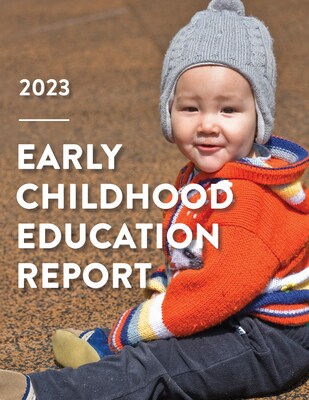UofT Study finds uneven progress on Canada's child care plan
Canada NewsWire
TORONTO, April 25, 2024
TORONTO, April 25, 2024 /CNW/ - A new assessment of the country's early education and child care services by the Atkinson Centre at the University of Toronto finds mixed results for the Canada-Wide Early Learning and Child Care (CWELCC) plan. Affordability targets have been surpassed with $10-per-day child care the norm in much of the country, but depending on where you live, finding care has become more difficult.
"It's difficult to reach a Canada-wide verdict on the status of CWELCC," says Dr. Emis Akbari, a co-investigator on the study. "Access to child care and the quality of care vary widely depending on the province or territory."
The Early Childhood Education Report identifies developments in child care enrolment, affordability, funding, workforce compensation, administration, and quality by province and territory. Jurisdictions are also rated against a 15-point scale of best practices in child care delivery.
In this edition, New Brunswick leads with 13.5 points, a record achievement for its efforts to build an infrastructure of supports for child care operators. Overall, the provinces east of Ontario rank higher than the rest of the country.
All jurisdictions have met their affordability targets. Except for Québec and the Yukon, where parents were already paying below $10 per day, parent costs were reduced by 50 per cent by the 2022 deadline. Nunavut, Saskatchewan, Manitoba, Prince Edward Island, Newfoundland and Labrador, and most recently the Northwest Territories, have all dropped child care fees to an average of $10 per day, well ahead of the 2026 schedule.
The CWELCC plans to increase access by 250,000 new child care spaces by 2026 for children from infancy to five years of age. By March 31, 2023, halfway through the plan's timeframe, 97,859 spaces were added. Prince Edward Island, Alberta, the Yukon, and the Northwest Territories are on track to exceed the growth targets set out in their child care agreements. Expansion is most curtailed where governments offer insufficient funding to meet the actual cost of new builds and renovations.
The major roadblock to adding spaces is staffing shortages. Difficulties finding and keeping staff directly impact child care availability, stability, and quality. "Without educators, centres operate with reduced enrolment, impacting their financial viability," said Dr. Akbari. "Program quality is compromised by staff turnover and when centres are given government exemptions to run without the required numbers of qualified staff."
Provincial and territorial governments complain there is not enough money in the CWELCC agreements to accomplish everything promised. A claim researchers question when jurisdictions are not using the federal funding available to them. Provinces and territories have added just over $4.5 billion to their child care spending since 2020, well below the $15 billion available to date through the CWELCC agreements.
"Uneven implementation of a new social program isn't new," says Dr. Akbari. "The hope is that some jurisdictions will use the CWELCC opportunity to do child care very well, becoming models to envy and emulate."
The Early Childhood Education Report, with detailed profiles for each province and territory, is available at ecereport.ca.
SOURCE Atkinson Centre, University of Toronto

![]() View original content to download multimedia: http://www.newswire.ca/en/releases/archive/April2024/25/c7440.html
View original content to download multimedia: http://www.newswire.ca/en/releases/archive/April2024/25/c7440.html

